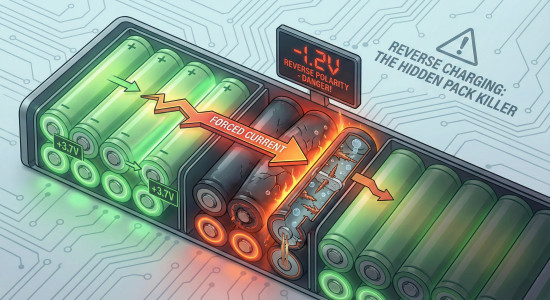
High-Power Buck Converter Test: Charging Batteries, Dummy Loads, and a 650-Watt Stress Run
Table of Contents
Introduction
I'm going to show you how to use a constant current buck converter to charge a battery, power a dummy load, and put 650 watts into an olive jar.
I haven't tried them all, but I'm fairly confident that this is the best constant current buck converter that you can get on Amazon. It includes a large heat sink and fan that actually work, so this thing can actually do the 20 amps that it claims over the entire voltage range.
Testing the Buck Converter at 20 Amps
I hooked up a dummy load to it, so let's see how it does at 20 amps. I'm going to just leave this recording for a while. Let's see how it does at 20 amps. We have an input voltage of 50.56 volts, and an output voltage of just under 6 volts.
That's a massive voltage difference, and it's running at 20 amps. A few moments later and the heatsink is up to 130 degrees F. A few minutes after that it was at 156 degrees. Then a little later, 157F, then it ended up stabilizing at 160.5 F.
Now I know I only ran this buck converter at peak load in those conditions for just a few minutes, but I challenge you to do that same thing with any other buck converter.
Charging a Battery
So now let's use it to charge a battery. I have a blue 7S4P NMC battery to charge. This battery is considered to be a 24 volt, and requires a full charge voltage of 29.4 volts.
The buck converter is set to 29.3, which is definitely close enough. The battery's current voltage is something lower than that. We'll just turn this off first, not for any safety reason, just so I can show you, and we'll plug this in.
The buck converter is set to 29.3 volts, but that's just the maximum voltage. It's also set to 5 amps, but that's just the maximum amps. We can control the voltage and the resistance. We control the voltage by setting the output here, and we control the resistance by choosing the components that we build our things out of.
The amount of current that flows is a result of the difference between the voltage and the power supply and the voltage of the load, along with their combined series resistances. So, when I press this button, I have it set to 5 amps, so what it does is, it detects the resistance here and raises the output voltage to whatever it needs to be above this voltage to produce 5 amps of current flow.
That's why the output voltage rises automatically. The output voltage is rising as fast as it needs to rise, considering the ever-rising voltage of the battery and its resistance. And it simply does whatever it needs to do to maintain that so that 5 amps of current flow.
Dummy Load Operation
The same thing will happen with the dummy load. The dummy load is at 0 volts, the battery is way higher voltage than this, right? But this nichrome wire is at 0 volts, and the buck converter will raise the voltage to whatever it has to raise it to so that the voltage difference is just right to produce that many amps of flow.
So, I've got this thing set to 5 amps, and this thing's at 0 volts. So, the output voltage of the buck converter is going to drop to something very low, whatever is required to get the current that I set.
Now I'm going to raise this to 10 amps. And what it will do is, it will raise the output voltage to whatever it has to be to make the amount of flow in current 10 amps, and it does that by detecting the resistance.
So, let's increase the current. I've noticed around 13 amps is when things get real spicy. There we go. 13 amps of current is currently flowing into this 0 volt load. So, that means it takes 3.5 volts from this, considering this cable, this connector, this wire, the whole circuit has a certain resistance such that it must get 3.5 more volts than it already has to produce 13 amps.
So, if this was somehow sitting at 10 volts, it would need 13.5 volts coming in to produce 10 amps. Every buck converter has an intrinsic voltage drop, regardless of how much current is flowing through it. So, if you have a 50 volt input, the highest output you'll be able to achieve is somewhere around 48.5 or 48.7 volts. There's always going to be somewhere around a 1.5 or a 1.3 volt drop when you're using a buck converter.
Switching Between Batteries
Okay, so I'm going to unplug the 14S battery and then plug the 24 volt 7S battery into the input of this buck converter. Now, the problem is, we're getting a low voltage warning.
The reason we're getting that is because I had the voltage set higher when I was using a higher voltage battery pack where I could output higher voltage ranges, but now I've switched to a lower voltage battery pack. So, now we're stuck in this condition, but it's easy.
Discharging the Battery
Okay, so let's plug in this dummy load again. Now, we're drawing 13 amps. You can see, with just this dummy load sitting in the water and just this $25 regulator board, I can safely drain this entire battery pack.
The input battery pack right now is being discharged. Its voltage is slowly dropping, but we won't be able to see it in this time span. We're pulling 51 watts at the regulator. This is limited to 20 amps, but we're not running it at 20 amps.
Also, we're not running it at the highest voltage range to give us access to all those amps. So, we can raise the voltage and raise the current just to give us some more headroom here. There we go. Now we're drawing 119 watts through this regulator here.
These boards are about 85 to 90% efficient. So, you can do the math to work backwards and find out how many watts you're pulling from the battery pack, and then test the voltage while you're doing that on the input to see how many amps you're pulling.
And it allows you to just easily, reasonably put relatively high voltage batteries under a controllable load. It's not exactly what I would call a battery testing tool, but it can still give you a lot of useful information about the health of the battery.
Higher Power Testing
Okay, I've got another load hooked up. Let's see what it does. Alright, we're drawing 260 watts now. 11.58 amps at 22.3 volts. Let's let this sit here a minute. And we'll monitor current on the output and voltage on the input.
You can see the voltage is slowly dropping. That's because I have a pretty high load on this battery. 26.88 input volts, 22.3 volts on the output, so we're good for quite a while.
But eventually, this voltage will drop to the point where it cannot sustain the output voltage. And that'll be before it actually gets to that output voltage.
We're running it at a reasonably high load now, so I'm just going to monitor the temperature and let it sit here for a little while and see how it performs. It's not pegged out at 20 amps like it was before, but we're getting more watts than we were before.
So let's just let it sit here and see how it goes. So far, I'm just seeing 109 Fahrenheit as the max. Oh, there's 110. Even though we're delivering more watts, we're delivering less current, so this thing is under less stress.
But let's turn up the power. I'm going to switch it from the 24 volt back to the 52 volt battery. That's not going to change anything right away, but it'll give us a higher voltage range to work with.lesh
Okay, now we're doing 19.38 amps. As you can see, the load is boiling. I'm going to need to put some ice in that.
650-Watt Load Test
Here we go, fresh new water with ice. Let's get this back out of the way.
We're doing 36.8 volts into the load at 17.5 amps. That's 644 watts that I'm putting into that glass. 644 watts. And we're just going to give this a moment to see how this buck converter does before the water starts to boil.
The water is definitely going to overheat, but luckily we don't have to worry about the buck converter. We'll get this on camera too, just so we can see the ice melt. We are doing well over half a kilowatt, this buck converter is rated for one kilowatt. And so far, we're at 128 Fahrenheit.
That's about it. Here we go. And let's see how our buck converter temperature is doing. The hottest I'm seeing right now is just under 137. That's about it. That's about it. We're getting 144 Fahrenheit. This water is very hot. I had to add more ice!
But I mean, it's pretty impressive that an olive jar can handle 650 watts.
Conclusion
This constant-current buck converter reliably delivered its rated current and stayed thermally stable in extended tests, from charging a 7S NMC pack at ~5 A/29.3 V to driving a nichrome dummy load and sustaining ~650 W. The current regulation behaved as expected, automatically adjusting output voltage to maintain the set amperage as load voltage and resistance changed. Plan for an intrinsic drop of about 1.3–1.5 V between input and maximum achievable output, and remember that wiring/connectors add resistance that raises the voltage needed to hit a target current. Efficiency was roughly 85–90%, and temperatures ranged around 110–160 °F depending on load and airflow. It’s not a full battery analyzer, but it’s a practical, cost-effective tool for controlled charging, discharging, and applying predictable loads.
We hope this article helped you learn a thing or two about the best buck converter. Thanks for reading!


